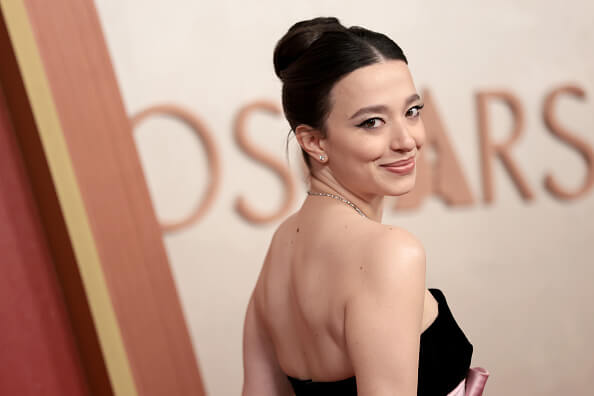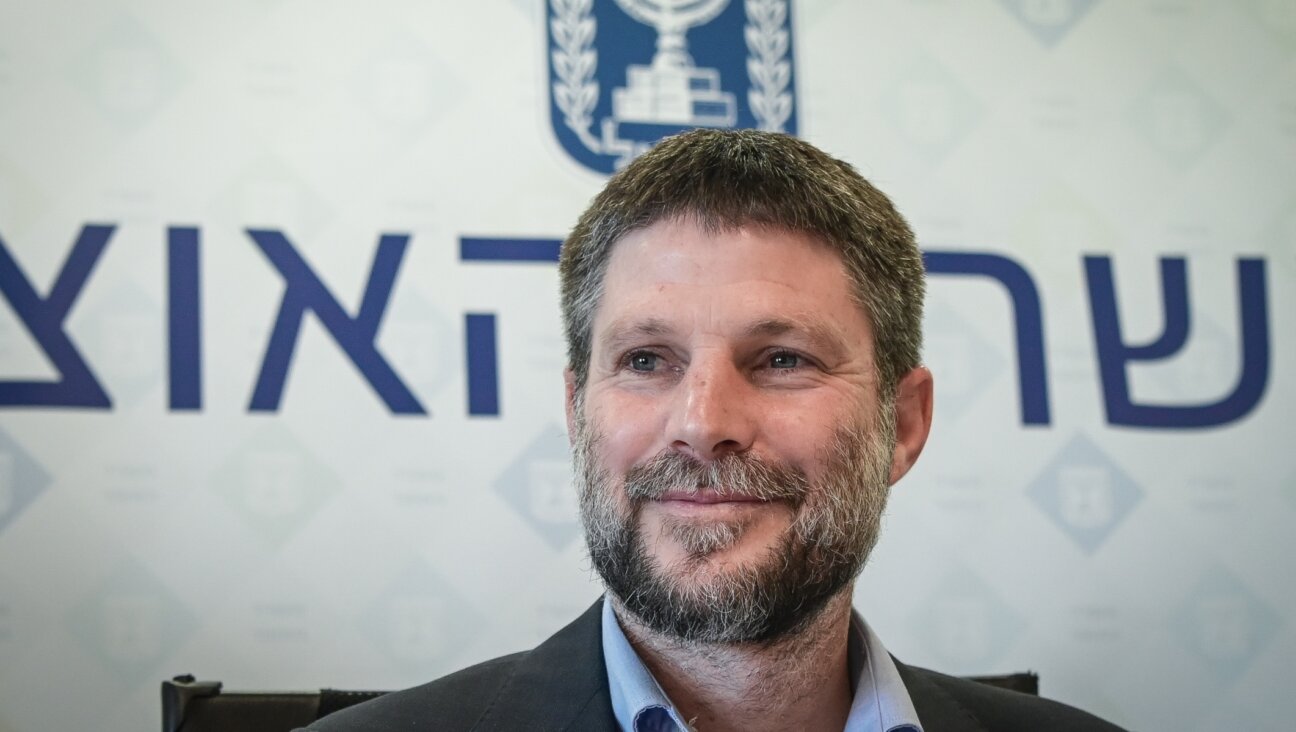The Rabbi Plays One on TV
Scene 1: You’re at High Holy Day services when you bend to get your prayer book and notice that the man next to you looks familiar. Chances are you don’t know the guy; you’ve just seen him on TV.
Scene 2: You’re enjoying the cantor’s singing and the voice suddenly hits a chord; you realize you have her CDs in your car.
Scene 3: You notice that no one seems to be nodding off during the readings, which are inspiring, touching, passionate, read with feeling. In fact, everybody seems entranced. And why not? These readers are pros. They’ve recited Shakespeare and Moliére. The congregation is moved to tears when the actor in the embroidered yarmulke suddenly takes over and starts cracking jokes. The bima has turned into a stage, and now it’s “Comedy Tonight!”
The setting? Rosh Hashana or Yom Kippur services at Temple Shalom for the Arts, the Creative Arts Temple or the Synagogue for the Performing Arts in Los Angeles. Who can be surprised that the city of stars has synagogues for the stars? Welcome to services in the entertainment industry, whose two faces of tragedy and comedy are well represented. You might be sitting next to Red Buttons, James Caan, Joan Rivers, Ed Asner, Goldie Hawn, Fyvush Finkel, Leonard Nimoy or Melissa Gilbert, now the head of the Screen Actors Guild. The rest of the congregation may be less recognizable; they work behind the scenes — as writers, producers, managers, agents, extras, lighting and sound technicians, gaffers, caterers, lawyers, secretaries and accountants. Instead of a script, celebrities hold prayer books, most wearing conservative suits and dresses. But a synagogue is also a place to be noticed, so sometimes there’s a flamboyant hat with aqua feathers or a red boa, feet fashioned by Jimmy Choo or Manolo Blahnik.
Some actors like Piper Laurie grew up in kosher homes; others come from the various Jewish movements, and some only recently discovered their Jewishness. Hollywood Jews are like non-Hollywood Jews — the only time most of them go to shul is on Rosh Hashana and Yom Kippur. And that’s when they’re not on location in Australia or Hong Kong. This is not the first synagogue to seem dominated by guild members. During the height of European immigration to the United States — and New York City’s Lower East Side in particular — specialized synagogues were common: There was a shul for the carpenters, one for the bakers, another for the milliners. Two of the rabbis who lead “the synagogues for the stars” also carry SAG cards, proving their membership to the Screen Actors Guild. Both have performed on television and video, often playing — what else? — rabbis.
Rabbi Jerome Cutler of the Creative Arts Temple, the son of an Orthodox rabbi in New York, is an award-winning comedian who used to perform in the Catskills (as Jerry Herring). He later wrote publicity for Frankie Avalon and others. When one of the actors he managed moved to Los Angeles, he moved too, setting up the Synagogue for the Performing Arts in 1972, now led by Rabbi Joseph Telushkin, who flies in for services from New York. Back in the 1970s, there was no synagogue for celebrities, many of whom did not want to be gawked at while at prayer, nor, God forbid, asked for autographs.
Some of Cutler’s original congregants were Walter Matthau, Jack Carter and Red Buttons. Cutler left the Synagogue for the Performing Arts some eight years later. Of his decision to leave, he said, “It was during yizkor services and somebody wanted to come in, but one of the major members wouldn’t admit him because he didn’t have a ticket. That was it!”
Around that time, Cutler was going through a divorce. “I just needed to clear my head,” he said of his departure, after which he began writing plays and TV sitcoms. In 1983, he returned to the rabbinate and started the Creative Arts Temple; Matthau, Carter and Buttons went with him.
Cutler and Rabbi David Baron –– who originally led two Conservative, non-industry synagogues as well as the Synagogue for the Performing Arts, before starting Temple Shalom for the Arts –– both describe their pulpits as a place where arts and religion combine. “We fall somewhere between Conservative and Reform,” Cutler said of the Creative Arts Temple. “We’re traditional in our own way.”
Baron said he resists a “tag” of Conservative, Reform or anything else. Cantor Judy Fox, who has shared the pulpit with Telushkin and Baron, said “their synagogues defy labeling.” At all three of the synagogues, prayers are in Hebrew and English, and there are Yiddish songs and poetry. Occasionally a well-known musician strikes up the strings in Russian, Ladino and other languages. Sometimes the synagogues will have a “surprise singer” usually from either the opera world or Broadway.
When Cutler started the Synagogue for the Performing Arts annual membership cost $18, and the rabbi didn’t get paid. Cutler said membership fees are “still kept low.” He said he is “nominally paid” now. Knowing from experience that performers are often “between jobs,” he welcomes even those who can’t afford High Holy Days tickets at $100.
“Nobody is kept out.” Cutler said. About 1,000 attend Cutler’s services at Beverly Hills High School each year. Services for Temple Shalom for the Arts will be at the Wilshire Theatre in Beverly Hills, where High Holy Days tickets cost nonmembers $250. About 2,000 people are expected.
Baron, a New Yorker, is descended from “a long line of chasidic rabbis.” Attractive and well built — like many of his congregants — he has a quick smile and friendly manner. Widowed (his first wife, Ellen, died from breast cancer), he is the father of a 17-year-old, Jonathan, who since childhood has been blowing the shofar. Baron’s second wife is also named Ellen. Telushkin has been rabbi of the Synagogue for the Performing Arts for more than a decade. About 2,000 are expected this year, according to Fox, the cantor.
Tickets for High Holy Day services at the Synagogue for the Performing Arts are $250, or $75 per service. Fox, who has been singing at the Synagogue for the Performing Arts since 1982, and has shared the pulpit with different rabbis, says she is always inspired by Telushkin: “He is funny. He can make tragic things lighter, and his sermons are useful to people.”
Come the new year, the stars will be out. Most will attend one of the three industry synagogues; others, like Paul Reiser, may choose to mingle with lesser-known Jews at the Stephen S. Wise Temple, while still others may choose a synagogue in Venice, Cali., one that’s closer to the beach — a convenient place for casting off sins. This year, for the second time, Jews who are ill, infirm or otherwise unable to attend a synagogue can watch “Yom Kippur: Prayers of Atonement” on the Hallmark Channel, playing on the small screen in a number of major American cities on October 5. Baron has put together a program that features Jason Alexander, Larry King, Arthur Miller, Mary Hart and Theodore Bikel, among others, to show and tell and sing the history, tradition and music of the sacred holy day.
A message from our Publisher & CEO Rachel Fishman Feddersen

I hope you appreciated this article. Before you go, I’d like to ask you to please support the Forward’s award-winning, nonprofit journalism so that we can be prepared for whatever news 2025 brings.
At a time when other newsrooms are closing or cutting back, the Forward has removed its paywall and invested additional resources to report on the ground from Israel and around the U.S. on the impact of the war, rising antisemitism and polarized discourse.
Readers like you make it all possible. Support our work by becoming a Forward Member and connect with our journalism and your community.
— Rachel Fishman Feddersen, Publisher and CEO





























